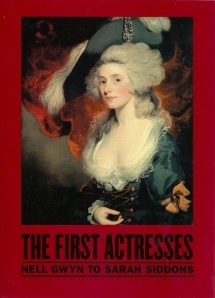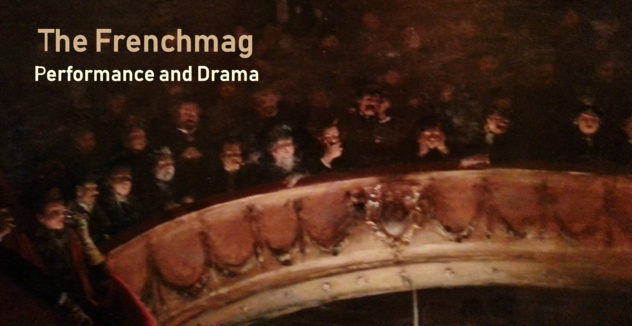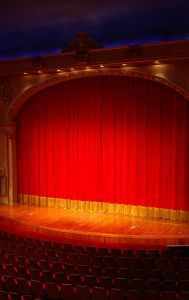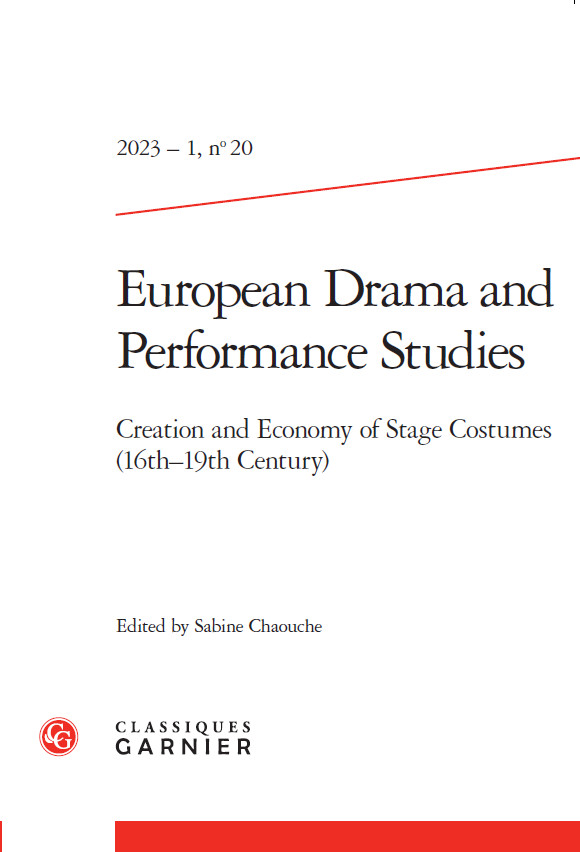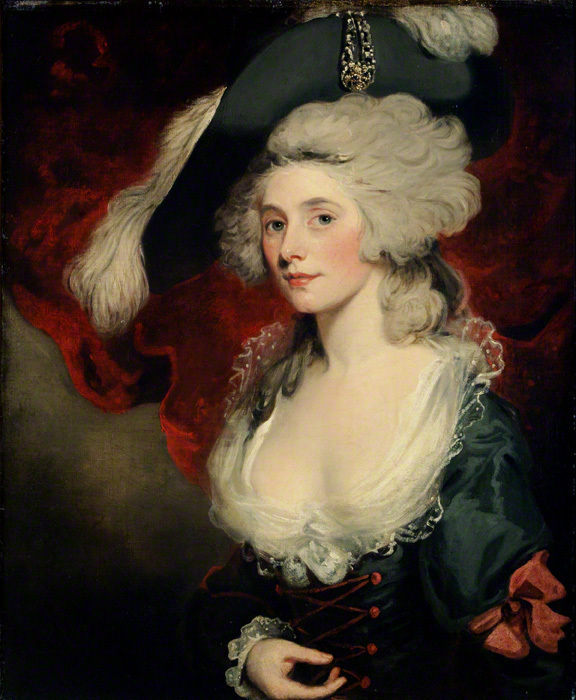
Mary Robinson as Perdita by John Hoppner, 1782 Chawton House Library, Hampshire
1. What is your area of expertise?
Dr Lucy Pelt (LP): I am curator of 18th century collections at the national portrait gallery, I specialize in the history of collecting, the art market in London, the history of engraving, Thomas Lawrence and the representation of women artists in C18.
Professor Gill Perry (GP): I work on modern and contemporary art, and on eighteenth century art and visual representation, especially the relationship between art, gender and the theatre. (http://www.open.ac.uk/Arts/arthistory/perry.shtml.
Professor Gill Perry (GP): I work on modern and contemporary art, and on eighteenth century art and visual representation, especially the relationship between art, gender and the theatre. (http://www.open.ac.uk/Arts/arthistory/perry.shtml.
2. How did the adventure begin?
GP: Since the early 1990s I have been researching the relationship between art, gender and British theatre in eighteenth culture. In 2007 I published a book Spectacular Flirtations: Viewing the Actress in British Art and Theatre 1768-1820. After working on the book I realised that this was an ideal topic for a pioneering exhibition. As the National portrait Gallery has one of the best collections of portraits of late seventeenth and eighteenth century British actresses, and has a history of producing high quality historical shows, I approached them with the proposal.
LP: Gill Perry approached the Gallery with the exhibition proposal in 2005/6 and following the Gallery’s Exhibition Committee which agreed to proceed with the idea Gill and I have been working together on refining the ideas, selecting the works and designing the show ever since.
LP: Gill Perry approached the Gallery with the exhibition proposal in 2005/6 and following the Gallery’s Exhibition Committee which agreed to proceed with the idea Gill and I have been working together on refining the ideas, selecting the works and designing the show ever since.
3. What was the most exciting in preparing this exhibition?
LP: Seeing the portrait of Elizabeth Inchbald in a private collection in New York for the first time. Seeing the paintings come out of their crates as we were hanging the exhibition.
GP: Discovering interesting, little known works in private collections. It was also a fascinating process trying to pull together all the different themes and ideas to produce a coherent exhibition. And actually seeing the works as they arrived in the gallery was (as Lucy says) particularly exciting and satisfying.
GP: Discovering interesting, little known works in private collections. It was also a fascinating process trying to pull together all the different themes and ideas to produce a coherent exhibition. And actually seeing the works as they arrived in the gallery was (as Lucy says) particularly exciting and satisfying.
4. How did you contribute to the exhibition?
GP: As curator, working with Lucy as co-curator.
LP: My role has been to work with Gill to help her realize her ideas in the form of an exhibition. I am called a co-curator but I tend to think of my role on this project as more of a producer helping facilitate and deliver the project and guided by my role as the Gallery’s specialist eighteenth century art historian.
LP: My role has been to work with Gill to help her realize her ideas in the form of an exhibition. I am called a co-curator but I tend to think of my role on this project as more of a producer helping facilitate and deliver the project and guided by my role as the Gallery’s specialist eighteenth century art historian.
5. How did you work on the catalogue?
LP: Very much the same as the previous, I liaised between Gill and the Gallery’s publication department in ensuring that both were happy with the proposal, the selection of authors and the final texts. I also read through every stage and made comments on all texts based on my expertise in C18th portraiture.
GP: I proposed the structure, chapters and themes for the catalogue, which echoed and developed the themes and concerns of the exhibition. I wrote 70% (3 chapters) and co-edited the work of the two other authors (Roach and West).
GP: I proposed the structure, chapters and themes for the catalogue, which echoed and developed the themes and concerns of the exhibition. I wrote 70% (3 chapters) and co-edited the work of the two other authors (Roach and West).
6. What was the main discovery relating to the actresses’ life and portraits?
GP: Many key themes and issues were highlighted in and by the selection of works and objects. The exhibition reveals the vibrant relationship between art and theatre in eighteenth century England through an exploration of feminine portraiture. It charts the very visible –and controversial - emergence of the profession of the actress from the late seventeenth century onwards and shows how ambitious exhibition works and more intimate portraits, along with mass produced prints, also helped to develop the reputations and professional status of leading female performers - and of the theatre in general. At the same time it demonstrates the remarkable visibility and popularity of actress-portraits during this period, and provide a vivid spectacle of eighteenth-century femininity, fashion and theatricality. It shows how women performers (performing dance, drama and music) were key figures within the spectacular celebrity culture of that period, a culture which was also fuelled by gossipy theatre and art reviews, satirical prints, commemorative objects and the growing taste for hagiography/biography. It explores and reassesses the traditional association between actress and prostitute, or ‘whores and divines’, and heated debates about women’s appearance and sexual decorum on stage. It combines much loved works by artists such as Joshua Reynolds, Thomas Gainsborough, John Hoppner and Thomas Lawrence, Johann Zoffany and James Gillray, with some newly discovered and little-known works and finally reveals the many ways in which women performers stimulated artistic innovation and creativity and provoked intellectual debate.
7. How did you select the paintings and organize the rooms?
LP: Exhibitions need to be selected with a number of issues in mind from the space, the availability and loanability of portraits, to the clarity of the narrative. We selected the portraits based upon our desire to provide an engaging overview of the development of the career of the actress in the C18th and their dynamic relationship with some of the leading artists in Britain at the time.
GP: See Lucy’s comments. I suggested some key themes for each of the rooms, and we selected a range of works, some well-known and iconic images, and others less well-known ‘discoveries’.
GP: See Lucy’s comments. I suggested some key themes for each of the rooms, and we selected a range of works, some well-known and iconic images, and others less well-known ‘discoveries’.
8. What are the results of the exhibition and what type of feedback did you get from spectators?
GP: I have been quite overwhelmed with the extent of the positive feedback. The show has had amazing coverage across different publications and newspapers. I have also received many emails and letters from appreciative visitors and colleagues. It seems that the themes of the show (including portraiture and feminine celebrity?) have captured the imagination of at least some of the public.
LP: People have shown great enthusiasm for the exhibition and we have a lot of positive feed back.
Interview by Sabine Chaouche
LP: People have shown great enthusiasm for the exhibition and we have a lot of positive feed back.
Interview by Sabine Chaouche
Professor Gill Perry: bibliography
Single Authored Books:
Paula Modersohn-Becker: Her Life and Work, The Women’s Press, London, 1979; and Harper and Row, 1980
Women Artists and the Parisian Avant-Garde: Modernism and ‘Feminine’ Art 1900-1920s, Manchester University Press, 1995
Find out more about this book
Spectacular Flirtations: Viewing the Actress in British Art and Theatre 1768-1820, Yale University Press, 2007
Books edited and co-authored:
Primitivism, Cubism and Abstraction, editor and author of part 1, ‘Primitivism and the Modern’, Yale University Press 1993
Femininity and Masculinity in 18th Century Art and Culture (co-editor with Michael Rossington) and author of introduction ‘Constructing the Feminine: A Delicacy of Taste?’ and chapter 1, ‘Women in Disguise: Likeness the Grand Style and the Conventions of Feminine Portraiture in the Work of Sir Joshua Reynolds’, Manchester University Press, 1994
Gender and Art, editor and author of introduction ‘Gender and Art History’, section introductions and conclusions and chapters 3, 8 and 11, Yale University Press, 1999.
Museums, Academies and Canons of Art, editor and author of preface and chapter 4, ‘Mere Face Painters’, Yale University Press, 1999
Women, Scholarship and Criticism: Gender and Knowledge c.1790-1900, co-editor with Anne Laurence and Joan Bellamy and author of introduction and chapter 1, ‘Musing on the Muses’, Manchester University Press, 2000
Difference and Excess in Contemporary Art: The Visibility of Women’s Practice, editor, Blackwells, 2004. (http://www.open.ac.uk/Arts/arthistory/difference-excess.shtml
Themes in Contemporary Art, co-editor with Paul Wood and author of chapter 6 ‘Dream Houses: Installations and the Home’.
Selected Articles
‘The Ascent to Nature: Some metaphors of Nature in Early Expressionist Art’, in Expressionism Re-assessed, edited by Shulaminth Behr and David Fanning, Manchester University Press, 1993
‘The British Sappho: Borrowed Identities and the Representation of Women Artists in the Eighteenth Century’, Oxford Art Journal, vol. 18, no. 2, 1995
‘Exhibiting les Indépendants: Gauguin and the Café Volpini Show’, in The Challenge of the Avante Garde, edited by Paul Wood, Yale University Press, 1999
‘Women Painting Women: Gender, Modernism and "Feminine" Art c.1910-c.1930’, in Rethinking Art Between the Wars: New Perspectives in Art History, edited by Hand Dam, Oystein Hjort, Niels Marup Jensen, University of Copenhagen, 2000
‘The Spectacle of the Muse: Exhibiting the Actress in the Royal Academy’, in Art on the Line, edited by David Solkin, Paul Mellon Centre and Yale University Press, 2001
‘Ambiguity and Desire: Metaphors of Sexuality in Late Eighteenth Century Representations of the Actress’, in Notorious Muse: The Actress in British Art and Culture, Paul Mellon Centre and Yale University Press, 2002
‘The Expanding Field: Ana Mendieta’s Silueta Series’, in Frameworks for Modern Art, edited by Gill Perry and Paul Wood, Yale University Press, 2004
‘Staging Gender and "Hairy Signs": Representing Dorothy Jordan’s Curls’, Eighteenth Century Studies, vol. 38, no. 1, 2004
‘Installations and Exploding Homes’, in ed. David Bindman, Chris Stephens, A History of British Art, Tate and Paul Mellon Center, 2008
‘Watery Weather’: Roni Horn in Iceland’, Art History, 32.1, February, 2009
Selected Exhibition Catalogues
Catalogue entries for German exhibits in Post-Impressionism: Cross Currents in European Painting 1880-1906, Royal Academy of Art, 1979-80
Essay ‘Germany, Norway and Switzerland’ and catalogue entries for Post-Impressionism: Cross Currents in European Painting 1880-1906, National Gallery of Art Washington, 1980
‘Picasso’s Later Graphic Work’, catalogue introduction, Galerie Herbagem Cannes/Waddingtons, London 1982
‘She sees like a woman and paints like a man’, catalogue introduction, Emilie Charmy 1878-1974, Kunsthaus Buhler, Stuttgart, 1991
‘Venetian Dreams and "Surrounding Stories": Alice Maher’s Orsola, catalogue essay for Maher’s installation at the Oratorio of San Ludovico, (Nuova Icona), Venice 2006
‘Anya Shrey: Solo Entertainer’, catalogue introduction for exhibition of Anya Shrey, Milton Keynes Gallery, 2006
‘Tales, Trails and Transformations: The Work of Alice Maher’, catalogue essay for Natural Artifice: Alice Maher, at Brighton Museum and Art Gallery and Nottingham Art Gallery, 2007
‘Women of Fashion: Dressing the Actress on and off Stage’, catalogue essay for Behind the Scenes: The Hidden Life of Georgian Theatre 1737-1784, Dr Johnson’s House Trust, London, 2007
Paula Modersohn-Becker: Her Life and Work, The Women’s Press, London, 1979; and Harper and Row, 1980
Women Artists and the Parisian Avant-Garde: Modernism and ‘Feminine’ Art 1900-1920s, Manchester University Press, 1995
Find out more about this book
Spectacular Flirtations: Viewing the Actress in British Art and Theatre 1768-1820, Yale University Press, 2007
Books edited and co-authored:
Primitivism, Cubism and Abstraction, editor and author of part 1, ‘Primitivism and the Modern’, Yale University Press 1993
Femininity and Masculinity in 18th Century Art and Culture (co-editor with Michael Rossington) and author of introduction ‘Constructing the Feminine: A Delicacy of Taste?’ and chapter 1, ‘Women in Disguise: Likeness the Grand Style and the Conventions of Feminine Portraiture in the Work of Sir Joshua Reynolds’, Manchester University Press, 1994
Gender and Art, editor and author of introduction ‘Gender and Art History’, section introductions and conclusions and chapters 3, 8 and 11, Yale University Press, 1999.
Museums, Academies and Canons of Art, editor and author of preface and chapter 4, ‘Mere Face Painters’, Yale University Press, 1999
Women, Scholarship and Criticism: Gender and Knowledge c.1790-1900, co-editor with Anne Laurence and Joan Bellamy and author of introduction and chapter 1, ‘Musing on the Muses’, Manchester University Press, 2000
Difference and Excess in Contemporary Art: The Visibility of Women’s Practice, editor, Blackwells, 2004. (http://www.open.ac.uk/Arts/arthistory/difference-excess.shtml
Themes in Contemporary Art, co-editor with Paul Wood and author of chapter 6 ‘Dream Houses: Installations and the Home’.
Selected Articles
‘The Ascent to Nature: Some metaphors of Nature in Early Expressionist Art’, in Expressionism Re-assessed, edited by Shulaminth Behr and David Fanning, Manchester University Press, 1993
‘The British Sappho: Borrowed Identities and the Representation of Women Artists in the Eighteenth Century’, Oxford Art Journal, vol. 18, no. 2, 1995
‘Exhibiting les Indépendants: Gauguin and the Café Volpini Show’, in The Challenge of the Avante Garde, edited by Paul Wood, Yale University Press, 1999
‘Women Painting Women: Gender, Modernism and "Feminine" Art c.1910-c.1930’, in Rethinking Art Between the Wars: New Perspectives in Art History, edited by Hand Dam, Oystein Hjort, Niels Marup Jensen, University of Copenhagen, 2000
‘The Spectacle of the Muse: Exhibiting the Actress in the Royal Academy’, in Art on the Line, edited by David Solkin, Paul Mellon Centre and Yale University Press, 2001
‘Ambiguity and Desire: Metaphors of Sexuality in Late Eighteenth Century Representations of the Actress’, in Notorious Muse: The Actress in British Art and Culture, Paul Mellon Centre and Yale University Press, 2002
‘The Expanding Field: Ana Mendieta’s Silueta Series’, in Frameworks for Modern Art, edited by Gill Perry and Paul Wood, Yale University Press, 2004
‘Staging Gender and "Hairy Signs": Representing Dorothy Jordan’s Curls’, Eighteenth Century Studies, vol. 38, no. 1, 2004
‘Installations and Exploding Homes’, in ed. David Bindman, Chris Stephens, A History of British Art, Tate and Paul Mellon Center, 2008
‘Watery Weather’: Roni Horn in Iceland’, Art History, 32.1, February, 2009
Selected Exhibition Catalogues
Catalogue entries for German exhibits in Post-Impressionism: Cross Currents in European Painting 1880-1906, Royal Academy of Art, 1979-80
Essay ‘Germany, Norway and Switzerland’ and catalogue entries for Post-Impressionism: Cross Currents in European Painting 1880-1906, National Gallery of Art Washington, 1980
‘Picasso’s Later Graphic Work’, catalogue introduction, Galerie Herbagem Cannes/Waddingtons, London 1982
‘She sees like a woman and paints like a man’, catalogue introduction, Emilie Charmy 1878-1974, Kunsthaus Buhler, Stuttgart, 1991
‘Venetian Dreams and "Surrounding Stories": Alice Maher’s Orsola, catalogue essay for Maher’s installation at the Oratorio of San Ludovico, (Nuova Icona), Venice 2006
‘Anya Shrey: Solo Entertainer’, catalogue introduction for exhibition of Anya Shrey, Milton Keynes Gallery, 2006
‘Tales, Trails and Transformations: The Work of Alice Maher’, catalogue essay for Natural Artifice: Alice Maher, at Brighton Museum and Art Gallery and Nottingham Art Gallery, 2007
‘Women of Fashion: Dressing the Actress on and off Stage’, catalogue essay for Behind the Scenes: The Hidden Life of Georgian Theatre 1737-1784, Dr Johnson’s House Trust, London, 2007
Actresses Featured
Nell Gwyn, Moll Davies, Kitty Clive, Hester Booth, Marie Sallé, Lavinia Fenton, Peg Woffington, Hannah Pritchard, Anne Bracegirdle, Mary Ann Yates, Susannah Cibber, Elizabeth Hopkins, George Anne Bellamy, Mary Stephens Wells, Sarah Siddons, Elizabeth Inchbald, Frances Abington, Mary Robinson, Dorothy Jordan, Elizabeth Bannister, Elizabeth Farren, Giovanna Baccelli, Anna Maria Crouch, Elizabeth Linley, Eva Maria Garrick, Elizabeth Billington.
Book: “The First Actresses: Nell Gwyn to Sarah Siddons” by Gill Perry with Joseph Roach and Shearer West
